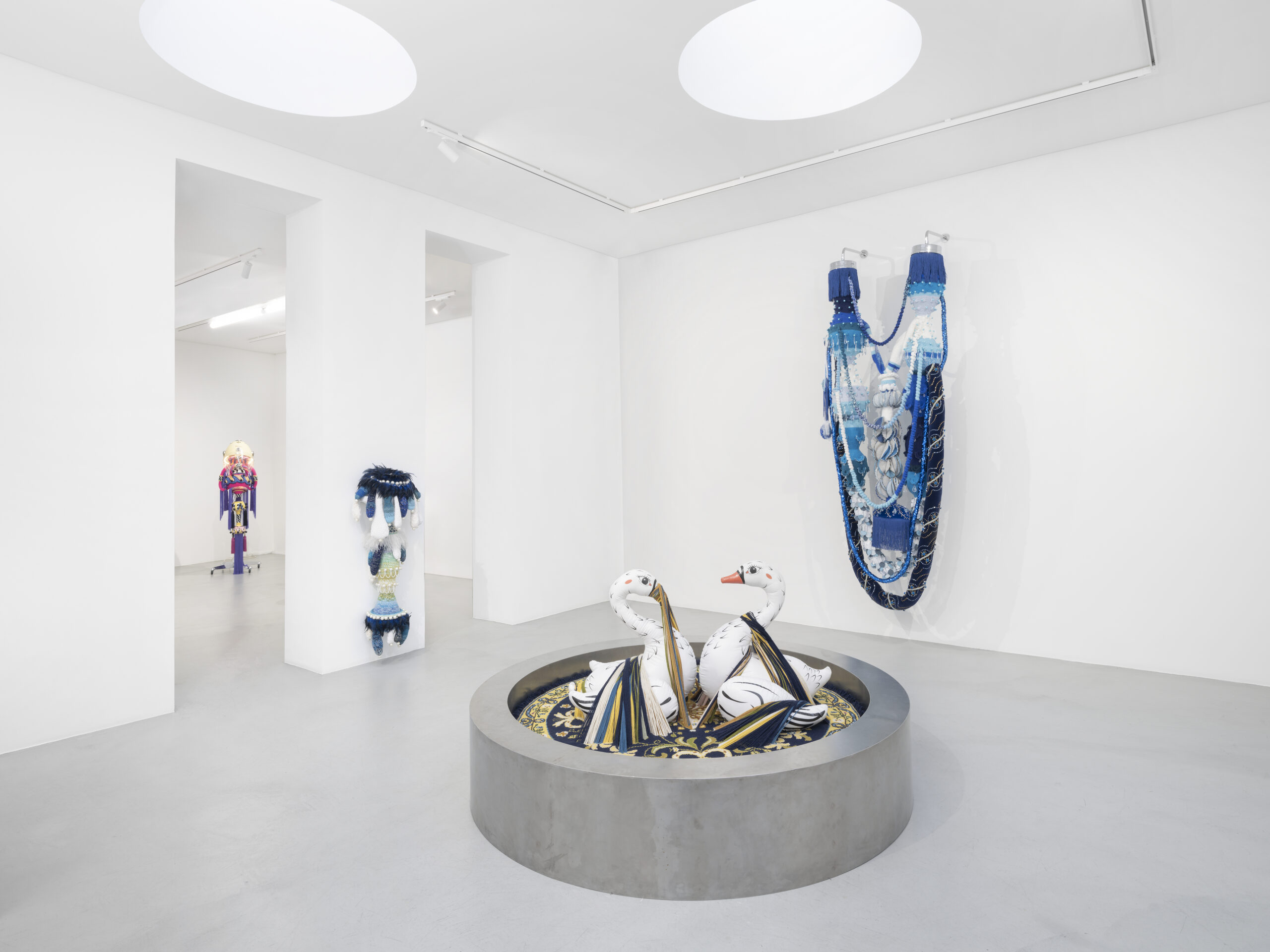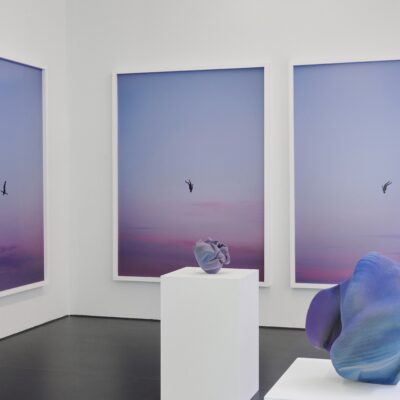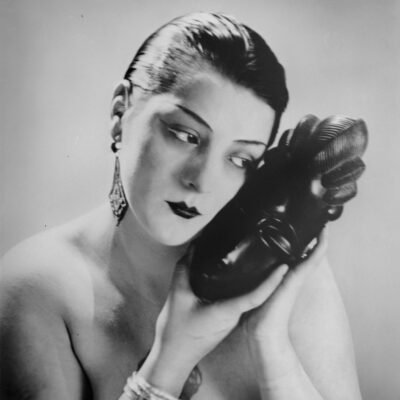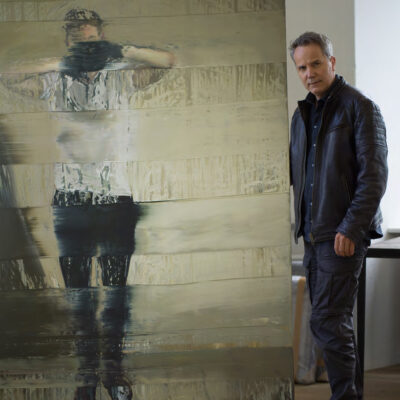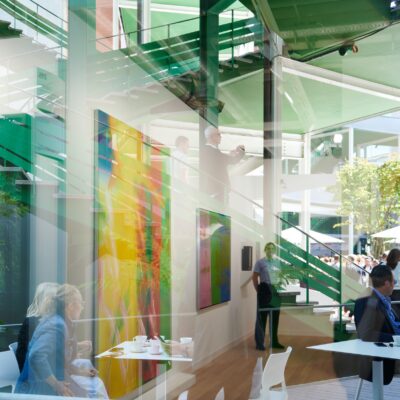The Grand Rue is host to the artistic collaboration of Ai Weiwei and Joana Vasconcelos at Gowen Contemporary. This exhibition, part of “Melting Pot”, the theme of the International Academy of Ceramics 70th-anniversary celebration, as well as its 50th congress, is part of a larger event focused on ceramics in Switzerland. The theme of “Melting Pot” refers to both the “alchemist’s crucible” or how pottery is made, as well as the “cultural crucible” which is particularly appropriate for a city like Geneva where cultures, nationalities, and languages mix and merge together.
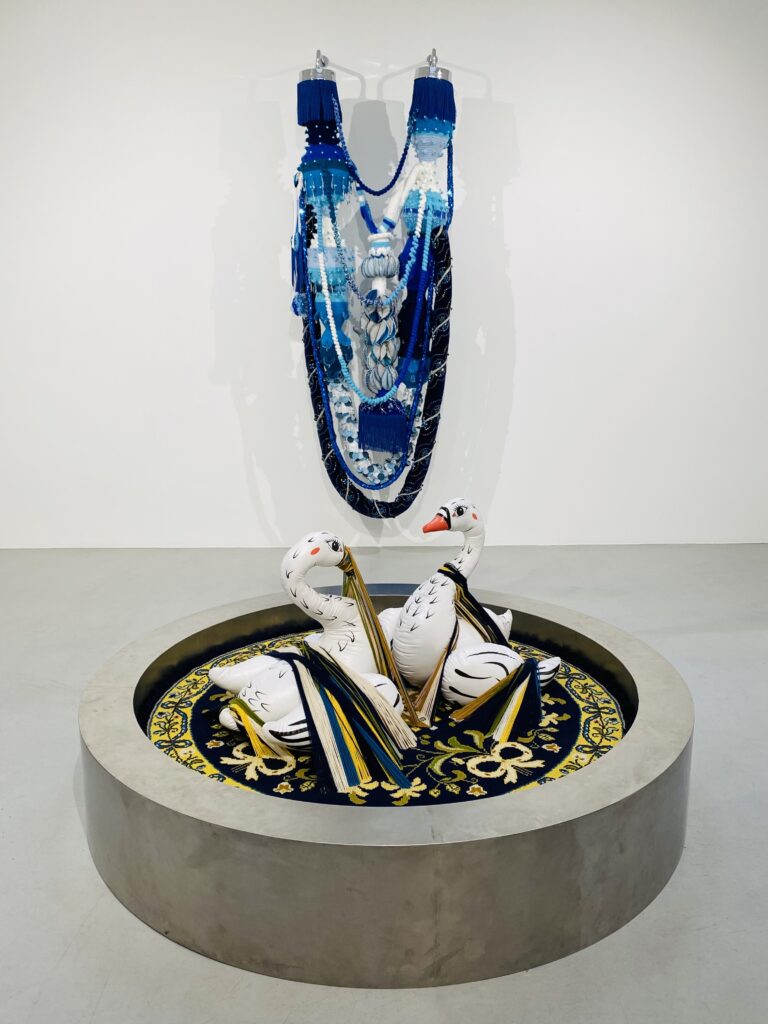
Joana Vasconcelos, Mae d’agua, 2019. Gowen Contemporary exhibition “Melting Pot” September 2022. Photo: K. Knupp
This element of a cultural crucible resonates with the exhibit at Gowen. Ai Weiwei is a Chinese artist born in 1957 who works in various locations including Berlin, Lisbon, and Cambridge, UK and has created a wide-ranging body of work found in museum collections globally. In 2006, he stayed in Jingdezhen, the center of Chinese ceramic production, and studied with local craftsmen. From this experience, he developed a variety of projects and installations with ceramics ranging from covering ancient neolithic vessels with modern paint, a comment on the recent focus on economic development over cultural preservation in China, to filling the Tate Modern Turbine Hall with ceramic sunflower seeds in 2010.
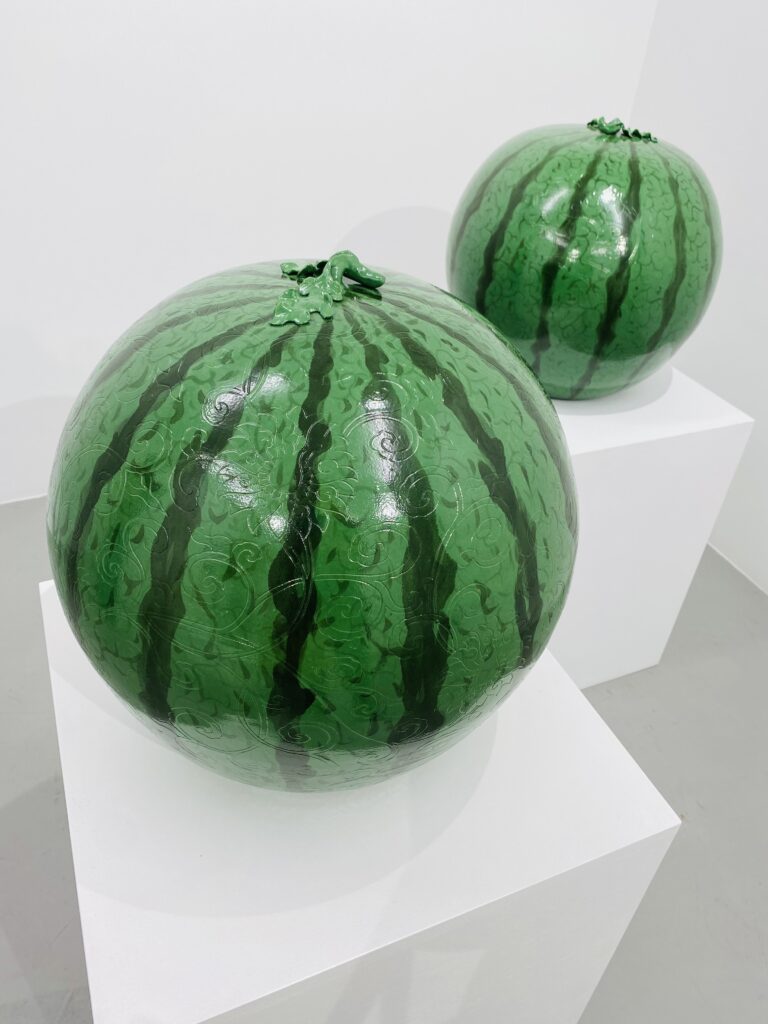
Ai Weiwei, Watermelon, 2019, Porcelain. Gowen Contemporary exhibition “Melting Pot” September 2022. Photo: K. Knupp
The exhibition at Gowen shows two pieces from Ai Weiwei; life-sized, realistic watermelons that are inscribed with stylized swirls and patterns. Watermelon is a popular food in China especially during the summertime, having once been eaten mainly by royalty. By representing an everyday object as art, these works question what is art, what is valuable to society, and why? These are questions that Ai returns to again and again in his art. According to Ai, “All humanity lives according to certain immutable conditions of life, and of society. That has always been so. Artists should always aim to challenge these whenever the opportunity arises.” (2009)
The swirling etchings on the surface of Ai’s sculptures mirror the crocheted surface embellishment of Joana Vasconcelos’ ceramic pieces in the show. Vasconcelos was born in 1971 in Paris. She now lives and works in Lisbon where she has a large studio employing 50 people with areas for drawing, sewing, architecture, production, and exhibition of her work. She is known for creating complex sculptures often using everyday materials such as shiny metal cooking pans formed into huge high-heeled stilettos, and an ice-cream sculpture comprised entirely of colorful plastic ice cream dishes. She has also championed the use of textiles, embroidery, knitting, and crochet: items associated with women’s work that has traditionally been undervalued but in recent years have been elevated to fine art status by artists worldwide.
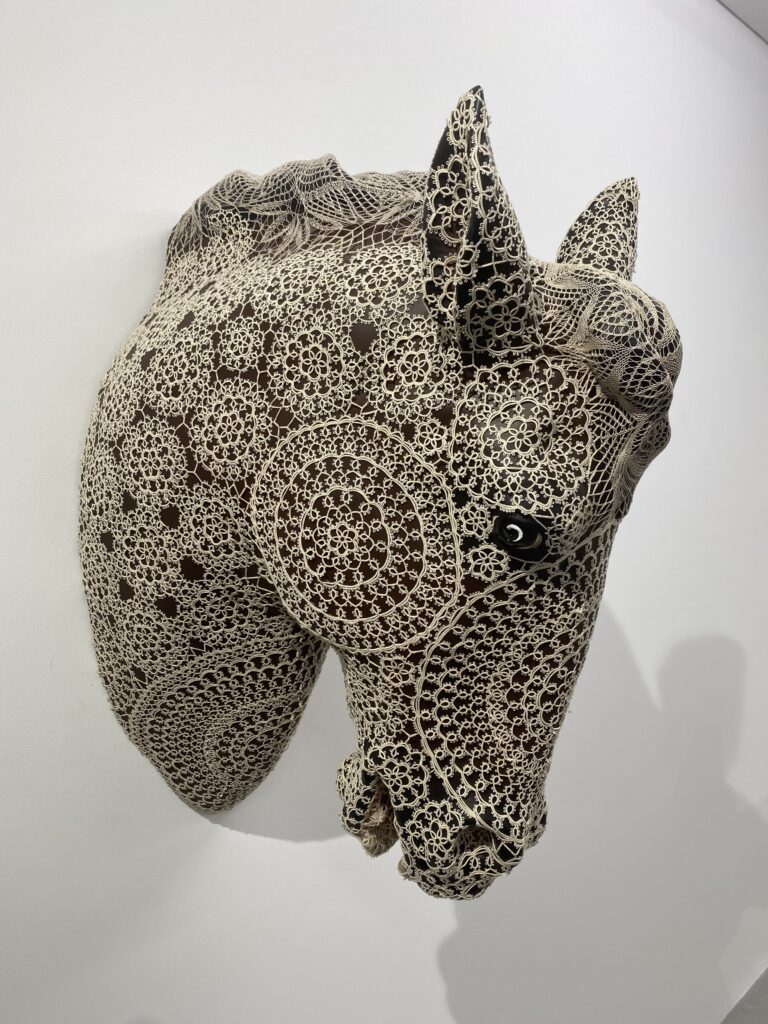
Joana Vasconcelos, Magritte, 2016. Gowen Contemporary exhibition “Melting Pot” September 2022. Photo: K. Knupp
At Gowen, Vasconcelos exhibits ceramic sculptures she appropriated from Portugese producer Rafael Bordalo Pinheiro (1846-1905). These pieces continue to be produced based on the original designs from the 19th century and are part of the Portuguese domestic cultural heritage. Vasconcelos envelops the animal ceramics in crochet made in the Azores to create a “second skin” around them. This serves to both protect the pieces from damage, and also embellish or decorate them in a way she refers to as ” refined clothes, lingerie, or haute couture”. With this embellishment, she elevates the pieces from everyday domesticity to pieces of fine art.
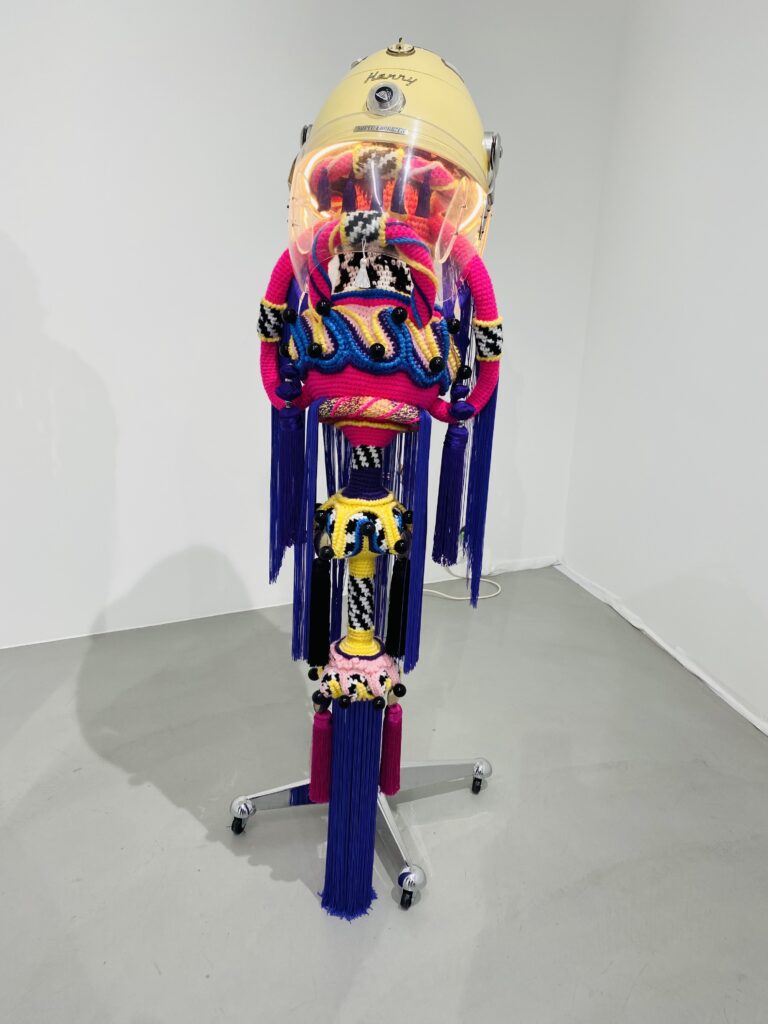
Joana Vasconcelos, Ubuntu, 2022. Gowen Contemporary exhibition “Melting Pot” September 2022. Photo: K. Knupp
Many other pieces in the show are composed of elaborately knitted and crocheted fantasy creations that are embroidered, beaded, and tasseled. The details on display attest to the time-consuming work, all hand-done, that goes into each piece. Ubuntu, 2022, features a vintage hairdryer combined with handmade woolen crochet, ornaments and LED lights. Ubuntu, a term from the Nguni Bantu language, can be translated as “humanity” or the human virtues of “compassion and humanity”. This piece speaks to the human desire to decorate oneself in order to become more beautiful. The tassels and lighting create a dramatic, eye-catching sculpture that one could imagine strutting down the catwalk at an haute-couture fashion show. Similarly, Magic Mint Tetris is composed of crochet and ornaments combined with ceramic tiles. It speaks to the exuberant celebration by Vasconcelos of handcrafted work that is elevated from the domestic sphere to the art world.
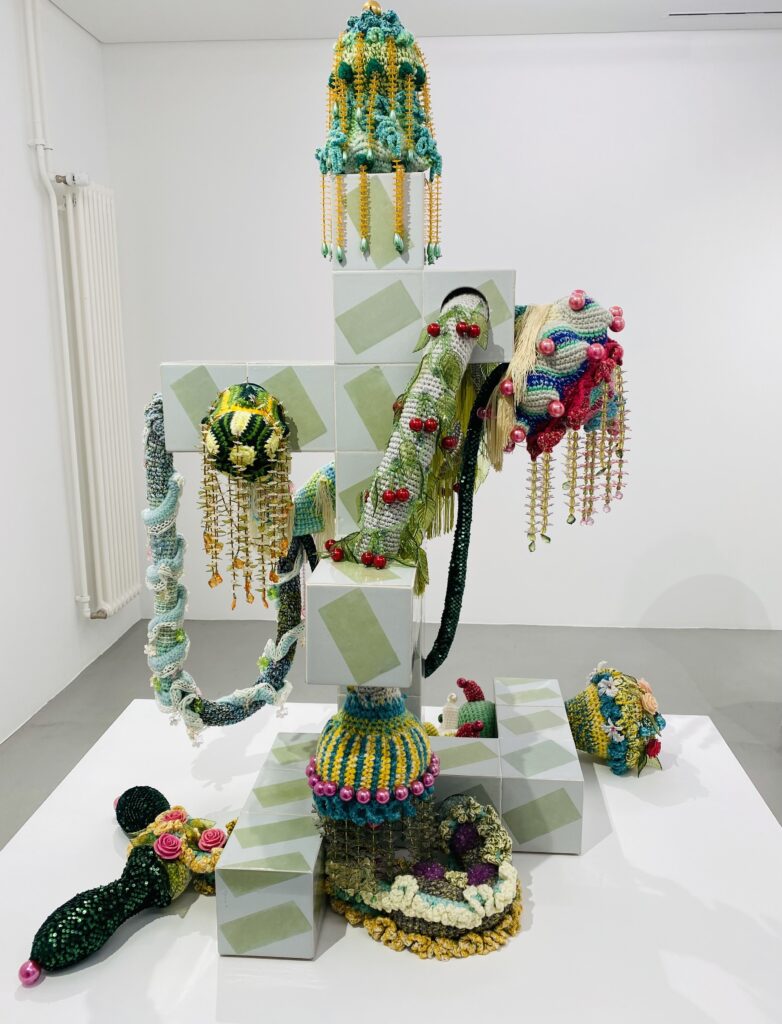
Joana Vasconcelos, Magic Mint Tetris, 2015. Gowen Contemporary exhibition “Melting Pot” September 2022. Photo: K. Knupp
The merging of a Chinese artist’s Watermelon sculptures with Vasconcelos’ pieces at the Gowen Contemporary exhibition is a powerful statement of the energy and creativity that can be generated through cultural collaborations. Through this exhibition, we comprehend that the art world is globally interconnected and that we can all benefit from the output of cultural crucibles and artistic melting pots.
For more information: www.gowencontemporary.com and a video about Joana Vasconcelos’ studio and work: https://www.youtube.com/watch?v=SdRmjkL6Fbc and a previous article on Ai Weiwei: https://art-vista.com/ai-weiwei-besides-its-always-the-others/
Main photo: Courtesy Gowen Image: ©Julien Gremaud
